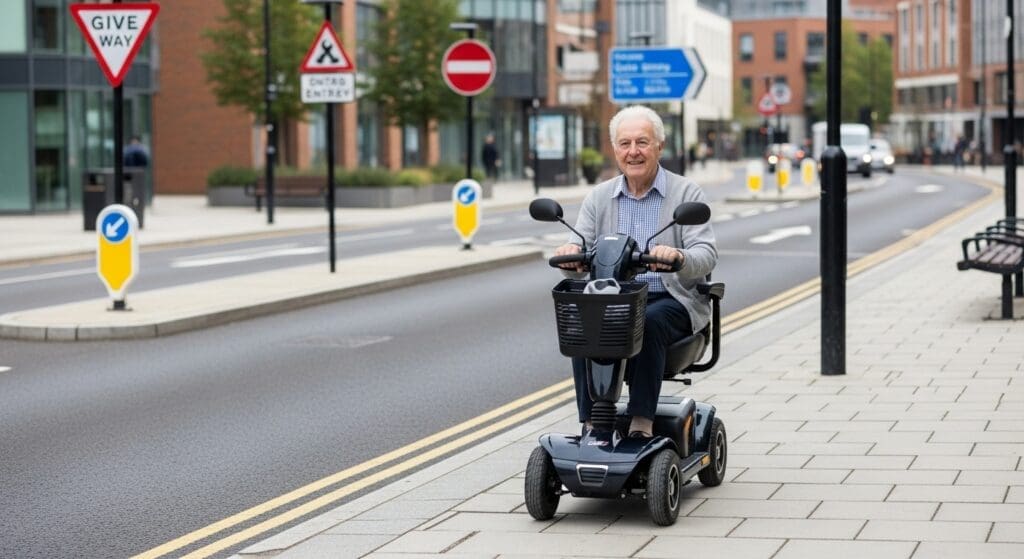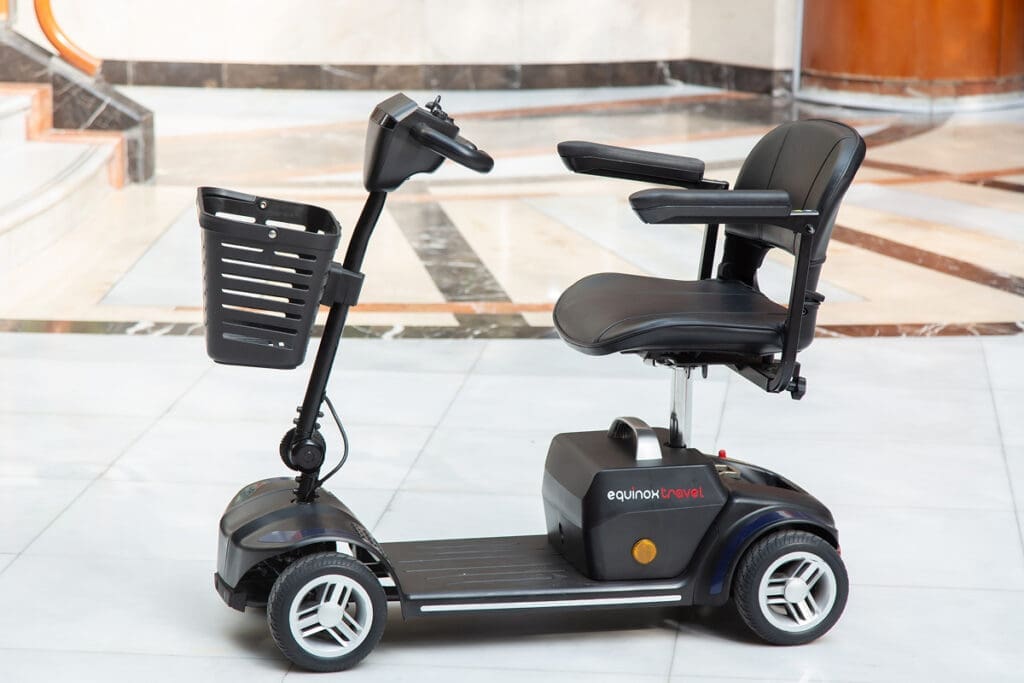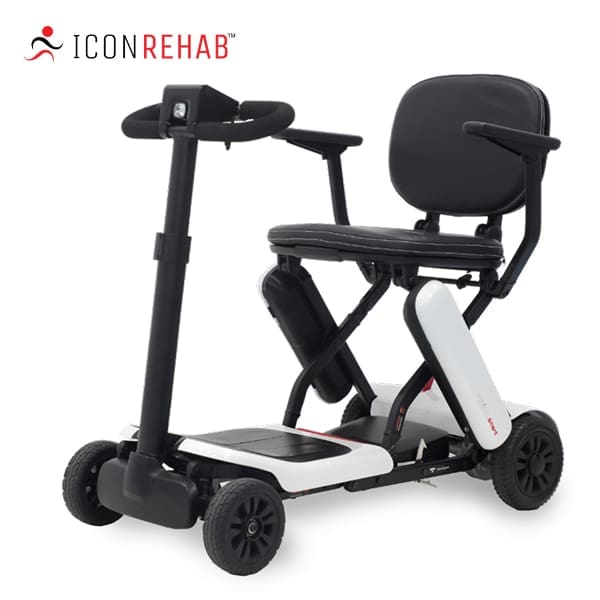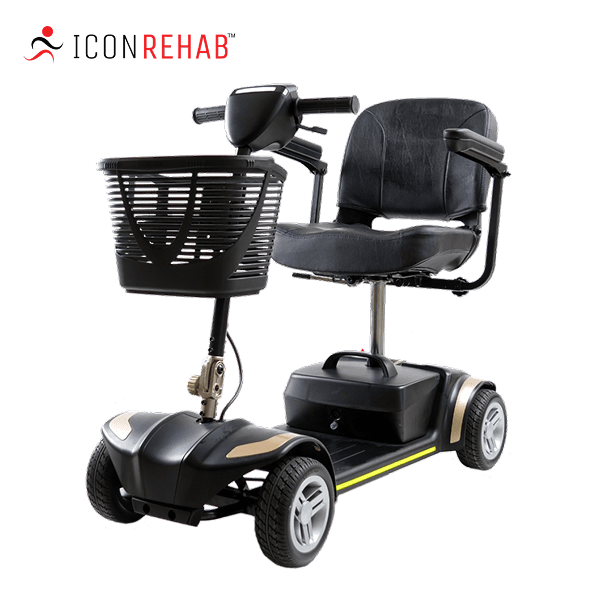
Introduction: Mobility Scooter Laws UK Explained
If you use or are thinking about buying a mobility scooter, it’s important to understand the rules that apply in the UK. Mobility scooter laws set out where you can drive, what equipment is required, and who can legally use different types of scooters. In the UK there are two main categories: Class 2 mobility scooters, which are limited to pavements, and Class 3 mobility scooters, which are the only road legal mobility scooters. This guide explains the key mobility scooter laws UK, covering Class 2 and Class 3 rules, registration requirements, insurance, and safety.
What Is a Road Legal Mobility Scooter?
Not every scooter can be used on the road. A road legal mobility scooter must be a Class 3 vehicle, capable of speeds up to 8 mph and fitted with safety features such as lights, indicators, and a horn.
Class 2 scooters, by contrast, are not road legal. They are limited to 4 mph and can only be used on pavements, footpaths, and in shopping areas.
Class 2 Mobility Scooter Rules
- Maximum speed: 4 mph.
- Where they can be used: pavements, pedestrian zones, and some public spaces.
- Registration: No DVLA registration required.
- Equipment: Do not need indicators, lights, or a horn.
- Who can use them: No minimum age requirement.
Class 2 scooters are ideal for short local trips such as shopping or visiting friends, but they cannot be used on public roads.

Class 3 Mobility Scooter Rules
- Maximum speed: 8 mph on the road and 4 mph on pavements.
- Where they can be used: roads (except motorways, cycle lanes, and bus lanes) and pavements when travelling at reduced speed.
- Registration: Must be registered with the DVLA.
- Equipment: Must be fitted with lights, indicators, reflectors, and a horn.
- Minimum age: You must be at least 14 years old.
These rules mean that Class 3 mobility scooters are the only type that can legally be driven on the road in the UK.
Do You Need a Driving Licence or Insurance?
You do not need a driving licence to operate any mobility scooter. Insurance is not legally required, but it is strongly recommended. A good insurance policy can cover accidents, damage, and theft, offering peace of mind to the user.
Explore our Full Range of Adapt A Home Mobility Scooters
Mobility Scooter Laws on Where You Can Drive
Pavements: Both Class 2 and Class 3 scooters can be driven on pavements, but the speed limit is 4 mph. Pedestrians always have priority.
Roads: Only Class 3 scooters can be used on the road. Users must follow the Highway Code and drive responsibly.
Restricted areas: Mobility scooters cannot be driven on motorways, in bus lanes, or in cycle lanes.
Parking and Blue Badge Use
Mobility scooter users may be eligible for a Blue Badge if they have severe mobility difficulties. The Blue Badge allows parking in designated disabled bays and in certain restricted areas, depending on local authority rules. The badge must only be used when the disabled person is present.
Financial Considerations
- Road tax: Not required for either Class 2 or Class 3 scooters.
- MOT: Not required.
- Purchase help: The Motability Scheme and VAT relief may reduce the cost of buying or leasing a scooter.
Common Misuse and Penalties
Misuse of mobility scooters includes lending your scooter to someone else, driving irresponsibly, or using a Class 2 scooter on the road. Penalties can include fines and confiscation of the scooter. Responsible use ensures safety for both the user and the public.
Tips for Safe and Legal Use
- Choose the right scooter for your needs.
- Get familiar with the controls before using it in public.
- Keep your scooter well maintained.
- Consider training sessions offered by local organisations.
Conclusion: Mobility Scooter Laws UK – Class 2 and Class 3 Rules in Summary
Understanding the difference between Class 2 mobility scooter rules and Class 3 mobility scooter rules is essential for safe and legal travel in the UK. A Class 2 mobility scooter is designed for pavement use only, with a maximum speed of 4 mph, while a Class 3 mobility scooter is a road legal mobility scooter, allowed on the road at up to 8 mph but restricted to 4 mph on pavements.
You do not need a driving licence to use a mobility scooter, but Class 3 models must be registered with the DVLA and fitted with the correct equipment such as lights, indicators, and a horn. Insurance is not a legal requirement, but it is strongly advised for peace of mind.
By following the correct mobility scooter laws UK, you can enjoy greater independence while staying safe, responsible, and compliant with the rules.


